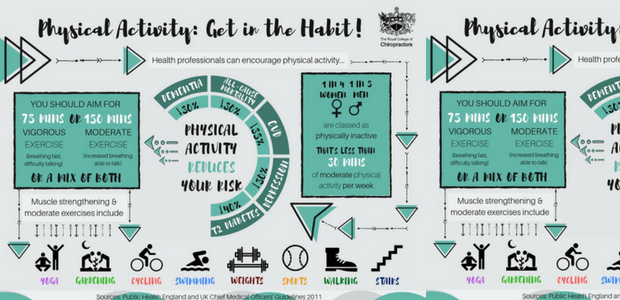The Effect Of Posture On Pain In The Back: Guidelines For Keeping Excellent Positioning Throughout Your Everyday Routine
The Effect Of Posture On Pain In The Back: Guidelines For Keeping Excellent Positioning Throughout Your Everyday Routine
Blog Article
Uploaded By- when to see a chiropractor
Maintaining proper posture isn't nearly staying up directly; it has to do with straightening your body in a manner that supports your spine and decreases the threat of pain in the back. The means you sit, stand, and relocate throughout the day can considerably influence your spinal health and wellness. Yet how precisely can you make certain great placement continually, even throughout busy days full of different activities? Let's dig deeper right into the refined yet impactful modifications you can make to your daily regimen to maintain your back delighted and healthy and balanced.
Significance of Correct Position
Correct position is important in maintaining a healthy and balanced back and preventing discomfort. When you sit or stand with excellent pose, your spinal column remains in placement, reducing stress on your muscular tissues, ligaments, and joints. This positioning enables the body to disperse weight evenly, avoiding extreme tension on specific areas that can cause discomfort and discomfort. By maintaining your spinal column effectively lined up, you can additionally enhance your breathing and food digestion, as slouching can press organs and restrict their functionality.
In addition, preserving excellent posture can boost your overall look and confidence. When you stand tall with your shoulders back and head held high, you exude self-confidence and show up more friendly. Good posture can additionally make you really feel more stimulated and sharp, as it advertises proper blood flow and allows your muscles to function efficiently.
Including proper stance right into your everyday routine, whether sitting at a workdesk, walking, or working out, is important for protecting against back pain and advertising general health. Keep in mind, a small change in how you hold on your own can make a considerable distinction in exactly how you really feel and function throughout the day.
Common Postural Mistakes
When it pertains to keeping good position, numerous people unconsciously make usual mistakes that can add to pain in the back and pain. One of one of the most common mistakes is slouching or stooping over while resting or standing. This placement places extreme stress on the spinal column and can lead to muscular tissue imbalances and discomfort in the future.
An additional usual mistake is overarching the reduced back, which can squash the all-natural curve of the spinal column and create discomfort. In addition, going across legs while resting might really feel comfortable, however it can develop an imbalance in the hips and hips, causing postural problems.
Utilizing a pillow that's also soft or too solid while resting can also influence your placement and add to pain in the back. Last but not least, constantly craning your neck to check out screens or adjusting your setting often can strain the neck and shoulders. Bearing in mind these usual postural blunders can help you maintain better positioning and lower the risk of back pain.
Tips for Correcting Positioning
To improve your positioning and minimize neck and back pain, it's vital to focus on making small changes throughout your daily routine. Begin by bearing in mind your stance. When resting, ensure your feet are level on the floor, your back is straight, and your shoulders are loosened up. Stay clear of slouching or leaning to one side. Use ergonomic chairs or paddings to support your reduced back.
When standing, distribute your weight uniformly on both feet, maintain your knees a little bent, and embed your pelvis. Involve your core muscles to sustain your back. Take breaks to stretch and walk around if you have a sedentary work. Incorporate exercises that reinforce your core and back muscular tissues, such as slabs or bridges.
While sleeping, use a cushion that sustains the natural contour of your neck to maintain proper spine alignment. Avoid sleeping on your belly, as it can stress your neck and back. By being mindful of these tips and making small adjustments, you can gradually fix your positioning and minimize pain in the back.
Verdict
Bear in mind, maintaining good stance is key to stop neck and back pain and advertising back health. By bearing in simply click the following site , distributing weight equally, and engaging your core muscular tissues, you can minimize stress on your back and decrease the threat of discomfort and injury. Include treatment for back pain , take normal breaks to extend, and strengthen your core and back muscles to maintain correct placement throughout the day. Your back will thank you for it!
